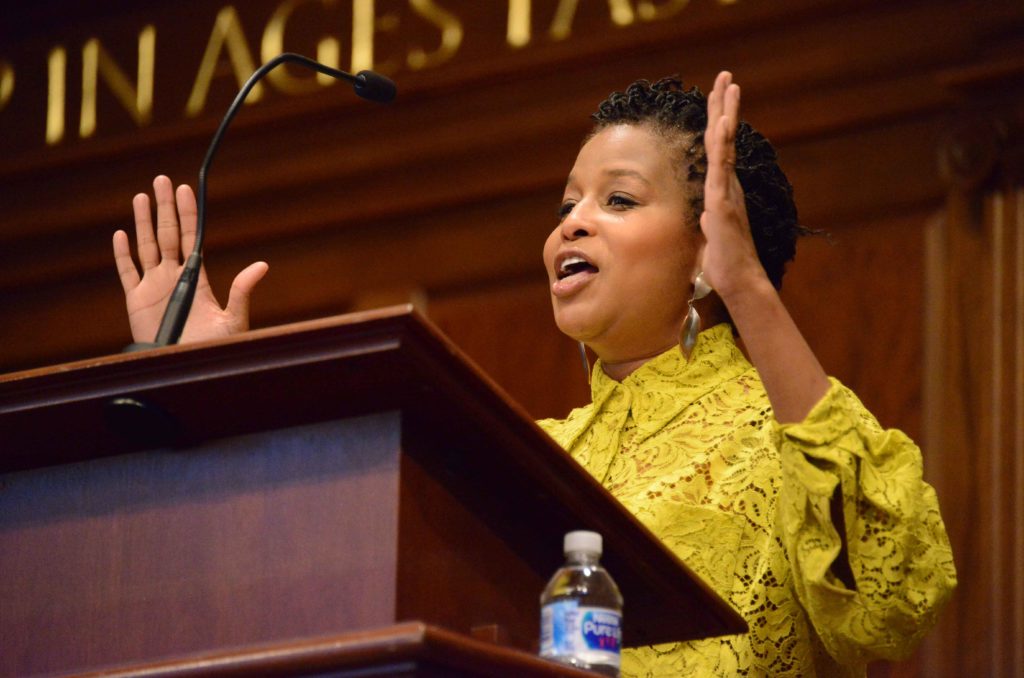Journalist Nikita Stewart on the “1619 Project” and Teaching About Slavery in America
On November 12, New York Times journalist Nikita Stewart addressed students and faculty in Hall, to speak about an important, sobering anniversary. Exactly 400 years ago this fall, the first enslaved people from Africa arrived in Virginia by boat. This past August, The New York Times launched its 1619 Project with the goal of re-examining the legacy of slavery in the United States. Nikita Stewart, a native Texan who studied journalism at Western Kentucky University, wrote one of the project’s lead essays, titled Why Can’t We Teach This? Ms. Stewart has been a finalist for the Livingston Award and the Investigative Reporters and Editors Award. This spring she will publish her first book titled Troop 6000; it chronicles the extraordinary story of the first Girl Scout troop designated for homeless girls, and the remarkable countrywide responses it sparked.
Her essay in the 1619 Project addressed specifically the way in which our country’s schools teach—or avoid—the topic of slavery to young people. During Hall, Ms. Stewart shared examples of the ways in which schools in our country misinform or gloss over this enormous, formative part of our nation’s history. The examples were troubling and shocking, particularly because many of them occurred so recently. For example, this year a teacher in Bronxville, New York, held a mock slave auction with the Black students in her fifth-grade classroom. In 2015, a high school social studies textbook in Texas read: “the Atlantic slave trade… brought millions of workers from Africa to the southern United States to work on agricultural plantations.” Ms. Stewart spoke of the way Thomas Jefferson’s relationship with fourteen-year-old slave Sally Hemings is often described euphamistically as an “affair,” and she discussed the many monuments erected celebrating individuals who played prominent roles in perpetuating slavery. “The remnants of slavery are all around us in 2019,” Ms. Stewart explained. “So why can’t we talk about that in our schools?”
With holes and misrepresentations in so many American history textbooks and classrooms, Ms. Stewart encouraged students to look to primary sources in order to get the full picture of our country’s history. Reading primary sources critically and with the source, audience, and historical context in mind, she said, is the best way for students to arm themselves with the most accurate information possible.
After Hall, Ms. Stewart visited two U.S. History classes, to continue the conversation with students and faculty.

